Your cart is currently empty!
#Hanfugirltravels: Shangri-la [Since 2001] (previously known as Zhong Dian)
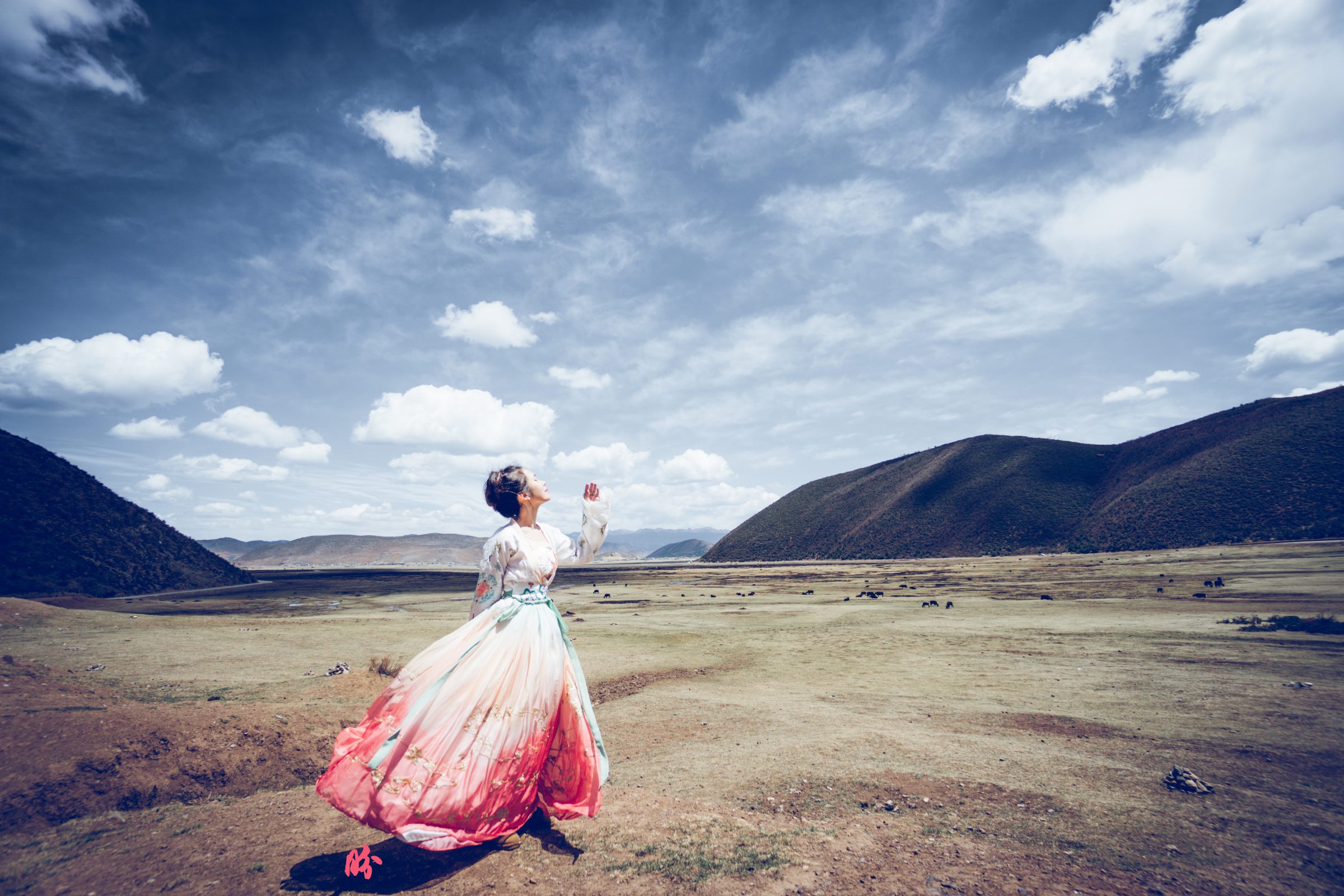
Shangri-la, wasn’t always known as Shangri-la. Surprise!
Macro Background
There are actually 2 places in China that has a Shangri-la to its name–one in Yunnan (where I visited), and another in Sichuan. The term “Shangri-la” was popularised by James Hilton in his novel Lost Horizon (1934), in which he described an Utopian place that’s full of peace and abundance, and there were many theories of which place he based his writing on–Nepal, Tibet, Yunnan, Sichuan etc. The book was published at a time when Europe was going through a tumultuous period, having just experienced WWI and the rise of fascism leading to WWII. Everyone was looking for a place of peaceful existence, surrounded not by fear and misery, guns and bombs, but snowcapped mountains and vast fields, lakes and abundance. Of course, having Hollywood getting on the bandwagon is a sure formula to getting your name heard by almost everyone in the West.
Yunnan is perhaps one of the earlier places in China to realise the importance of tourism in boosting its local economy, so for the World Expo of 1999, they made a proposal to the central government of China to change the name of Zhong Dian to Shangri-la. When Sichuan FINALLY realised how profitable it could’ve been to have such a term, it’s too late to adopt that name. So, Sichuan renamed a village Shangri-la, and called it the Last Shangri-la, and called the county (Daocheng Yading) in which the village is situated, Shambhala. But a rose by that of any other name should smell just as sweet (or, in the case of Zhongdian Shangri-la, a toilet with or without a view would smell just as raw).
As shared in my previous post, there are a few routes to Tibet from China–Sichuan, Qinghai, Xinjiang and Yunnan. All of them make amazing road trip journeys to the border just before crossing Tibet (Since it’s really difficult for foreigners to engage on road trips entering into Tibet itself at this point, we could only be contented with this). To illustrate how close Sichuan and Yunnan are: We were having lunch at one of the stops along the way in Shangri-la (Yunnan), and just across a bridge was Sichuan. So it really could’ve been anywhere between these two places!
Micro Background
Shangri-la (about 3,000m above sea level)
Origin of name: If you’ve read the wiki link to Shambhala, you would’ve learnt the Buddhist origin of this term. But I also noticed something interesting–almost all the Chinese-related sources would translate it to “The Moon and the Sun in our heart”. And when I search for that, it was only the Chinese-related sites that translated their content to English that have this term. The Chinese sites and sources all stated that it was the literal translation in Tibetan language, but I have yet to find an English source that confirms this. However, it is also important to note that in all the different Tibetan regions (again: Qinghai, Tibet, Yunnan and Sichuan), they all spoke different ‘dialects/variations’ of Tibetan language.
So I managed to find a combination of Chinese sources that gave a proper breakdown of this term in Tibetan language. Because I don’t speak it (oh, trust me, after this trip to Shangri-la, I’m so tempted to learn some Tibetan!!), I could only take their word for it.
What’s in a name
Due to the geographical isolation of Zhongdian, the local Tibetan dialect still retained its ancient form from 1,000 years ago. It kept much of the original vocabulary, spelling and pronunciation as did its culture and practices.
In local Tibetan dialect, the term Shangri-la is pronounced as Sems—kji—nyi—zhla (Official Tibetan: Sem—tsi—ni—da) with Sems=heart, Kji/gai=of, nyi & zhla= sun and moon. I think the term sun and moon is a metaphor for something that they long for, or they hold high in high regard, like the idiom “apple of my eye” does not refer to an actual apple, or in the case of the Chinese term “village of peach blossom [Chinese term for Utopia]” doesn’t literally mean a village that’s filled with peach blossoms. It is my speculation because I didn’t meet with any Tibetan along the way but I saw that the typical Tibetan-style houses were decorated with round dots and a star and moon symbol at the top part of the building (example like in the picture below). The symbol of moon and sun together also appear in many aspects of the Tibetan culture from daily lives to religions sites.
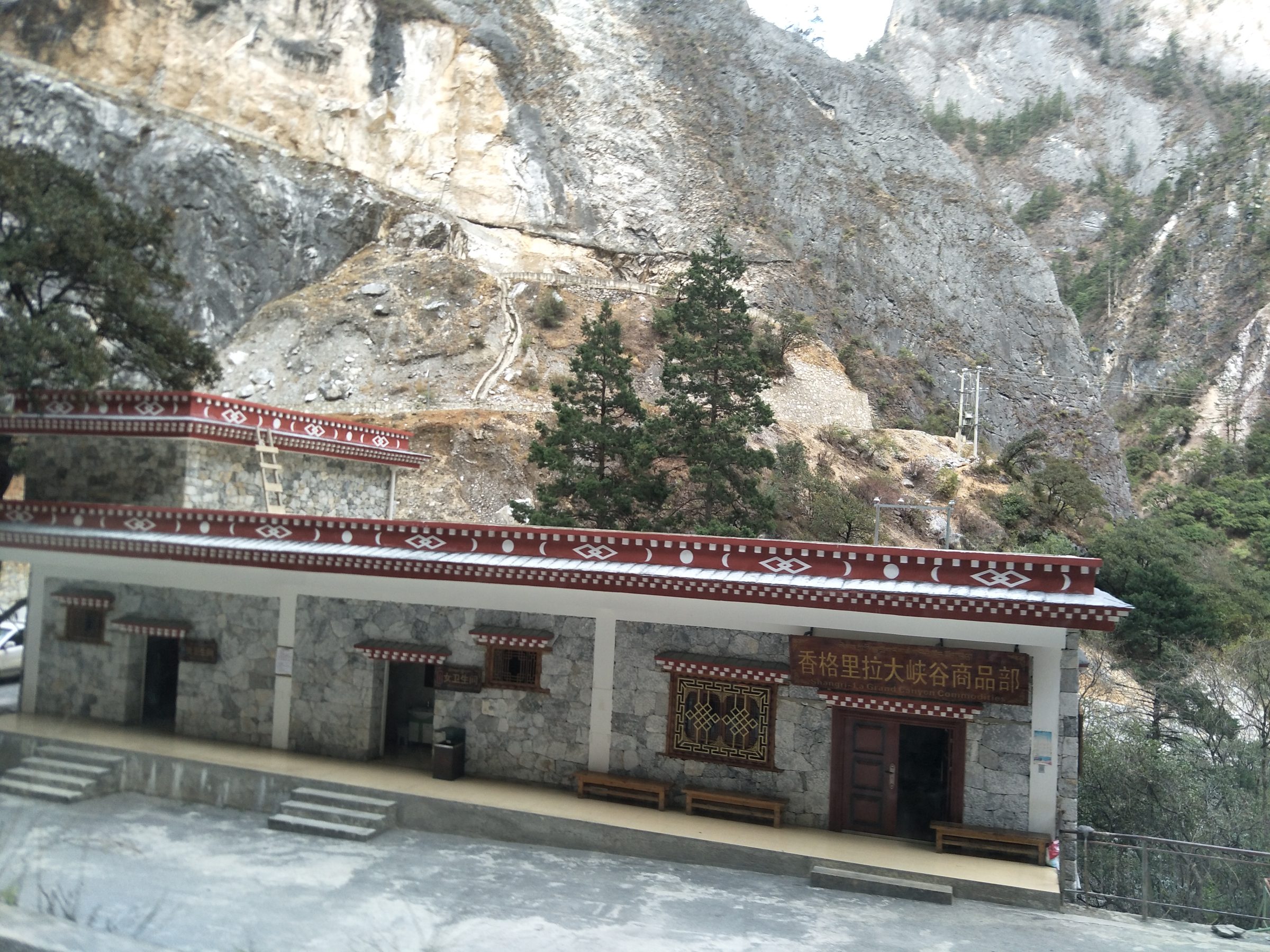
Accommodations (3 nights): I don’t recommend my accommodation in Shangri-la city on our first and last day because it was super cold (aircon didn’t help, it’s not very good at heat insulation. Also, it’s kinda new like 1 year old, so not everything is properly sorted). But I do recommend the one that I stayed for one night opposite Meili Snow Mountain. It’s called Eye of Meili 梅里之眼观景台酒店 at Fei Lai Si 飞来寺. Our guide brought us there, and it didn’t seem like they have any online presence, but it’s really a nice view of the Meili snow Mountain! You could try your luck to go there during low season to get a room on the spot. It’s just about 500m from the Fei Lai Temple if you drive further north along the road.

The accommodation at Meili is the nicest we had in Shangri-la, but it does have a bit of a ventilation problem (we smell smoke at times), and the sink and glass were so new that they didn’t fix a proper pipe to the sink (it was using something like the washing machine’s pipe, and not the proper sewage pipe). Ah well, I blame it on underdevelopment.
Guide: Our guide used to run an inn/accommodation in Lijiang, but due to the rise in rent, he decided to become an independent guide. He does the Yunnan-Tibet, Sichuan-Tibet and Tibet route most of the times and his rate is about 700rmb/day including his accommodation at the various places. He isn’t as chatty and fun as my Dali guide, but he does his job. He didn’t follow up to the sights because of some leg injury but doesn’t matter because the two major sites we went had their own guide included in the admission charge. He’s been in this line for 7-8 years, so quite experienced, except that he didn’t realise that some tickets are cheaper on Ctrip than if you by it in person, so you could get his help to buy tickets in advance if you don’t have a Chinese friend along with you (how to hack WeChat/ Ctrip payment :P!) His WeChat is: luoxun761214
Due to uncertain weather, lack of signages, small winding and dangerous roads, it is highly recommended to hire a driver for this leg of the journey. Also, extremely exhausting due to the long distance. It’s not expensive, about 700rmb/day for a 7-seater vehicle (about 150sgd/day) not including his meals–just invite him to join your meals, and he’ll take care of his own accommodation. So it’s really quite reasonable.
Sights: SO MANYYYY~ The main ones as follows. You can always stop along the way for a photo, but after a while you’re so used to the beauty that… you just drift in and out of consciousness during the journey. This is as CLOSE you can get to Tibet in China. Foreigners are not able to take the road from Sichuan, Yunnan, Xinjiang etc. to Tibet–you have to take flight in to Lhasa and go with the approved travel agency wherever you go, and check into designated hotels. But these routes are the most scenic. That’s why we have no choice but to make detour when we reach the edge of Yunnan and Tibet. But it’s definitely worth it. Anyway, in photography, there’s no detour because different angle, different lighting, make an entirely different picture!
Day 1
- Tiger Leaping Gorge–Quite a sight! Best time to go is later in the year when there’s more water from the mountain that’s being channel through this bend, making really spectacular waves. This is a must-visit.
- White Water Terrace–I was told that one can skip Turkey’s Pamukkale after friends saw my photo of this place. But I think the one in Turkey is much grander in scale, and you are allowed to go down to soak in the hot spring water! This one was freezing cold and you are not allowed to go into the terrace portion. Although, its saving grace is that it’s to obscure that you hardly see anyone as compared to the super huge crowd in Turkey.
- Shangri-la City (biggest Scriptures Wheel in the world, with tens of thousands of Buddhist scriptures contained in that structure). Just go and have a look after dinner.
Day 2
- Ganden Songtseling Monastery–amazing life lessons and solid content imparted by the guide. You can tell when a guide knows his/her stuff. It’s known as the little Potala Palace (a few friends thought that we went to the actual Potala! It’s that similar).
What’s nice about this area is that if you have enough time, you could take a walk around this lake just opposite the monastery. And when you are the other side of the lake, on a still day (not so much wind), you could see the entire palace being reflected on the lake–very picture worthy. But the day we went it was slightly hot, windy, and we were kind of in a rush. So we didn’t make the trip. - Meili Snow Mountain/Crown Prince Snow Mountain evening/night viewing from afar (You can’t climb onto it, unlike Jade Dragon mountain in Lijiang). It is one of the holy mountains in Tibetan culture. It’s like how they call Mount Fuji the shy mountain, because it’s always obscured by clouds/fog, the Meili/Crown Prince Snow Mountain was often shrouded in mist-ery too. It certainly looked that way when we were approaching it, so our guide told us to pray to the mountain god (the highest peak in the mountain–Kawagebo is known as their mountain god), so the clouds could clear. Of course I DID! haha that’s how I got to see the golden peak the next day for sunrise!).Kawagebo/Kawakarpo is known as the the head of the 8 holy mountains in Tibetan culture, at 6740m above sea level. Apparently Meili and Crown Prince snow mountain are linked, and Kawakarpo is the highest peak of Crown Prince snow mountain, not Meili. They are, to date, unscaled by anyone due to the steepness and the unpredictable climate up there. Further, in year 2000, a resolution was passed to forbid any sort of attempt to scale the peak because it was regarded as one of the 8 most holy mountains in Tibetan culture.
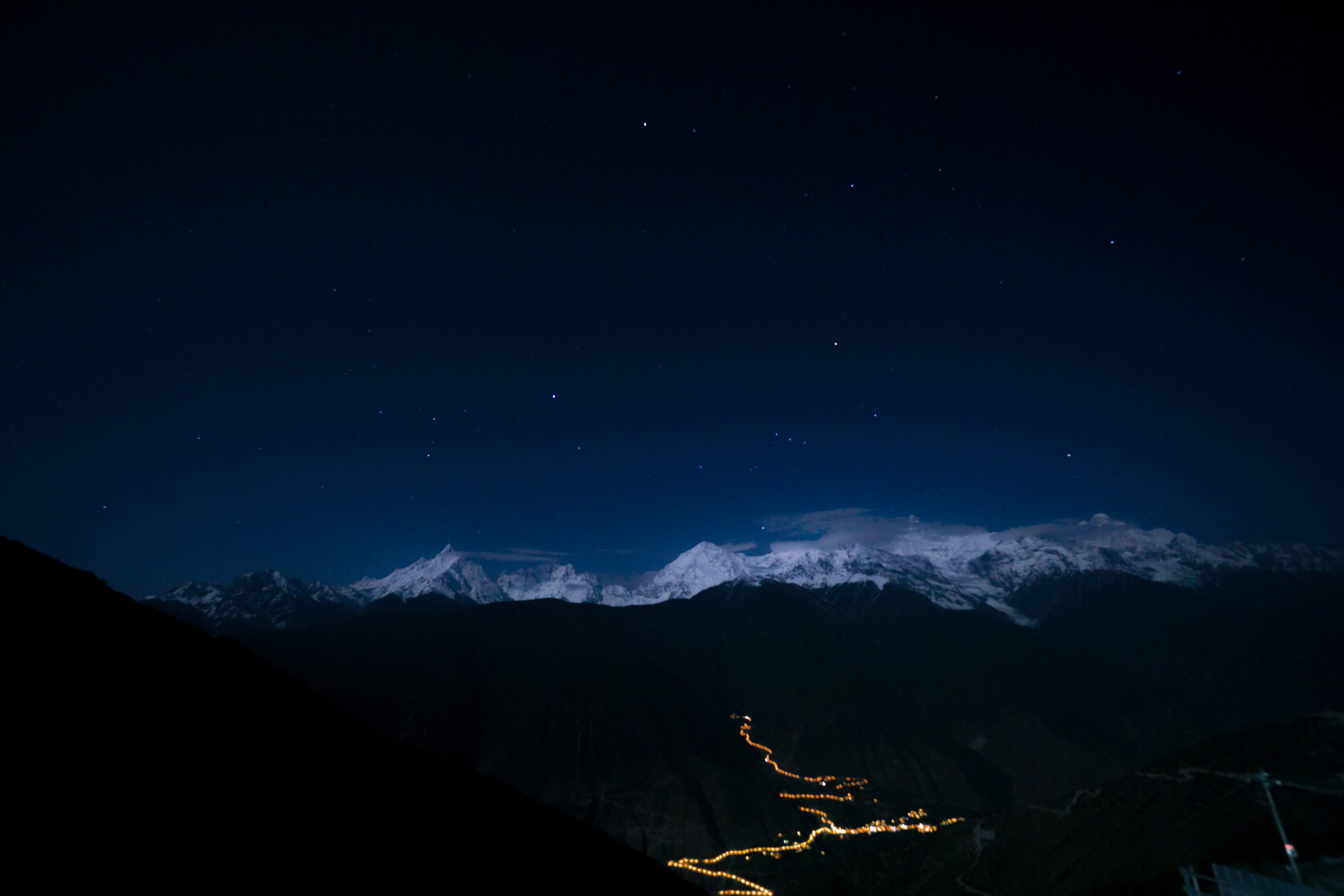
Our view before falling asleep
Day 3
- Sunrise on Meili & Taizi/ Crown Prince Snow Mountain
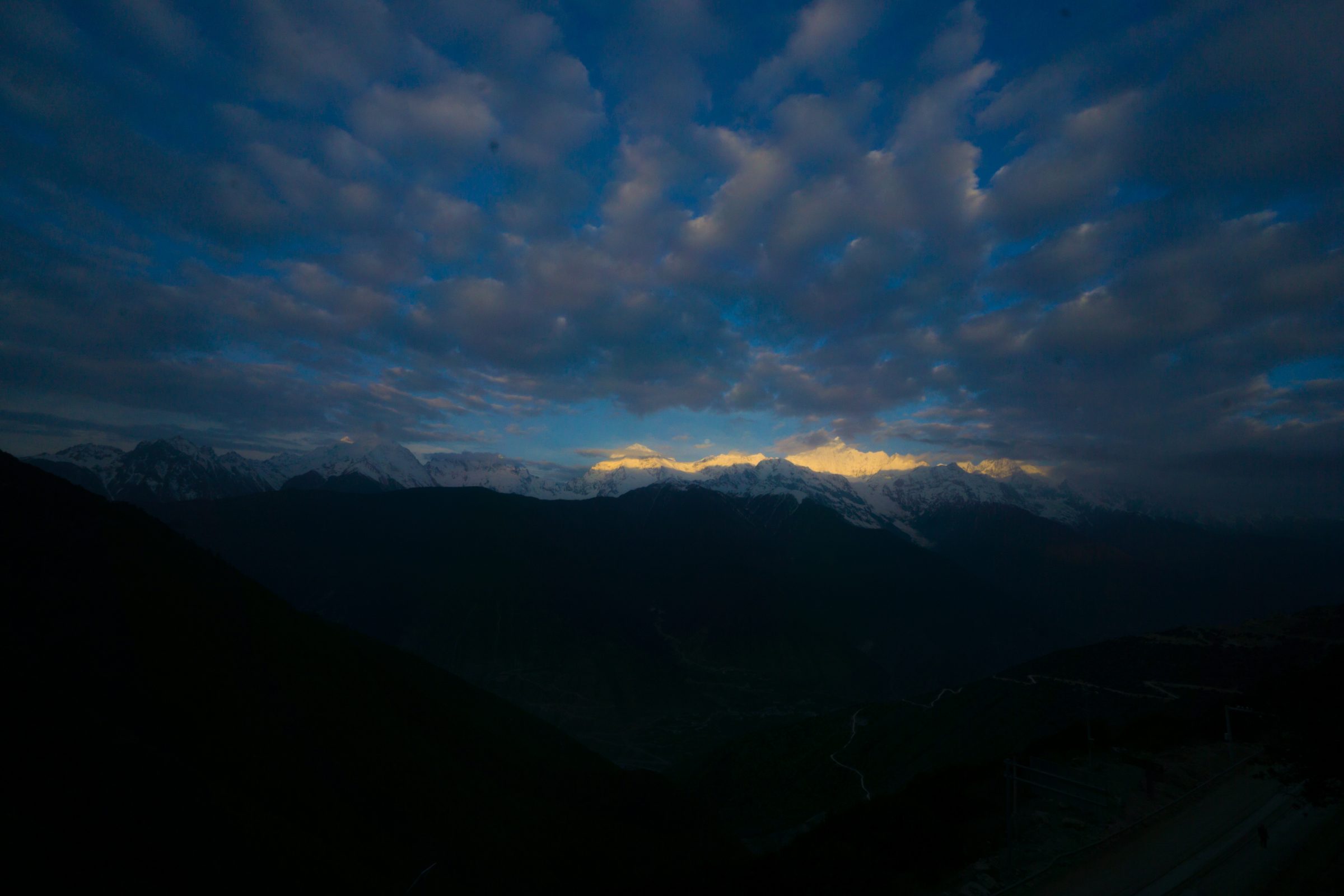
The golden peak only lasted for about half an hour, before the entire mountain top turned white under the sun. The golden peak only lasted for about half an hour, before the entire mountain top turned white under the sun.
- Fei Lai Temple:
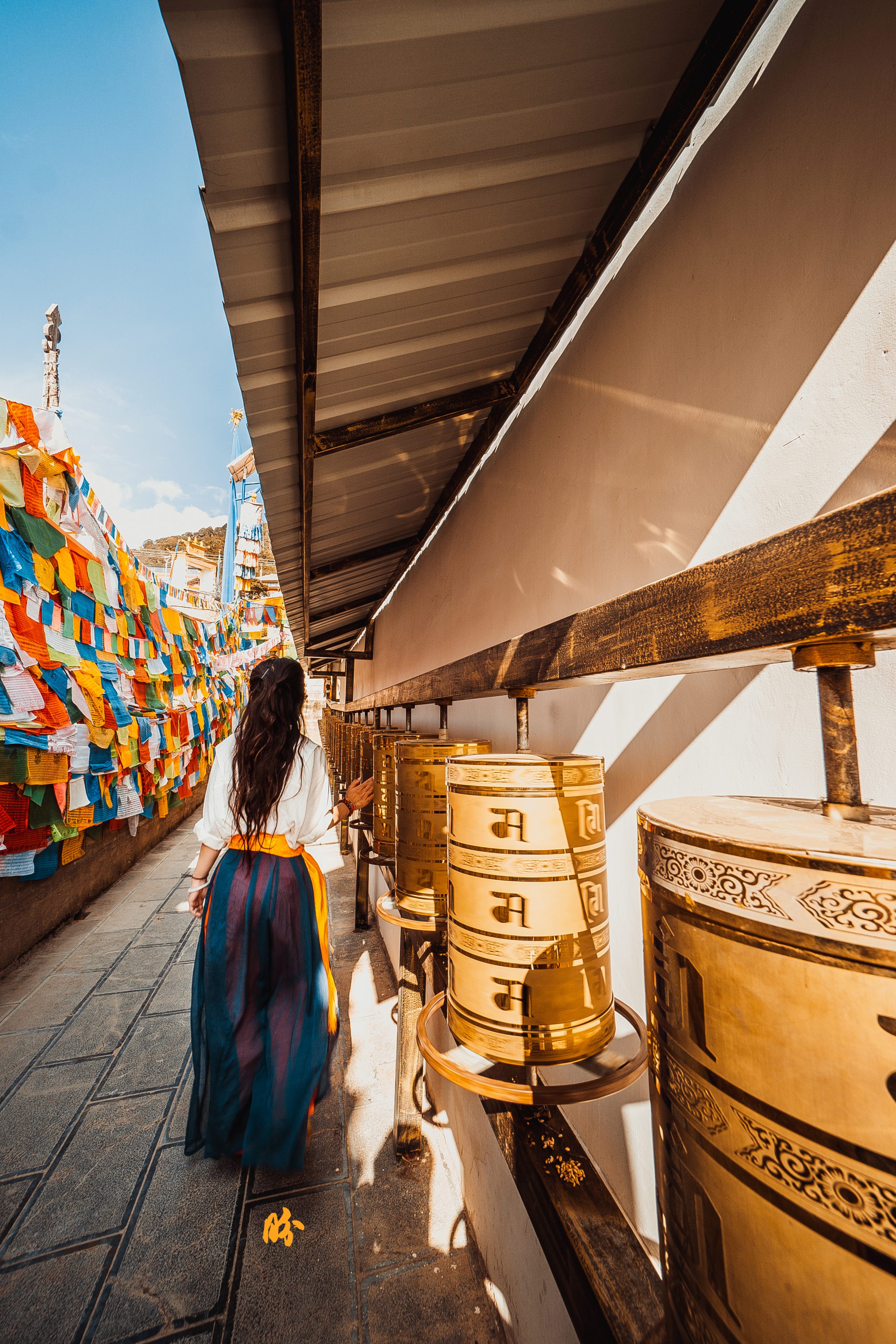
Turning these wheels in a clock-wise direction would be like reading the scriptures that’s on them, and the luck/blessing will flow as well. 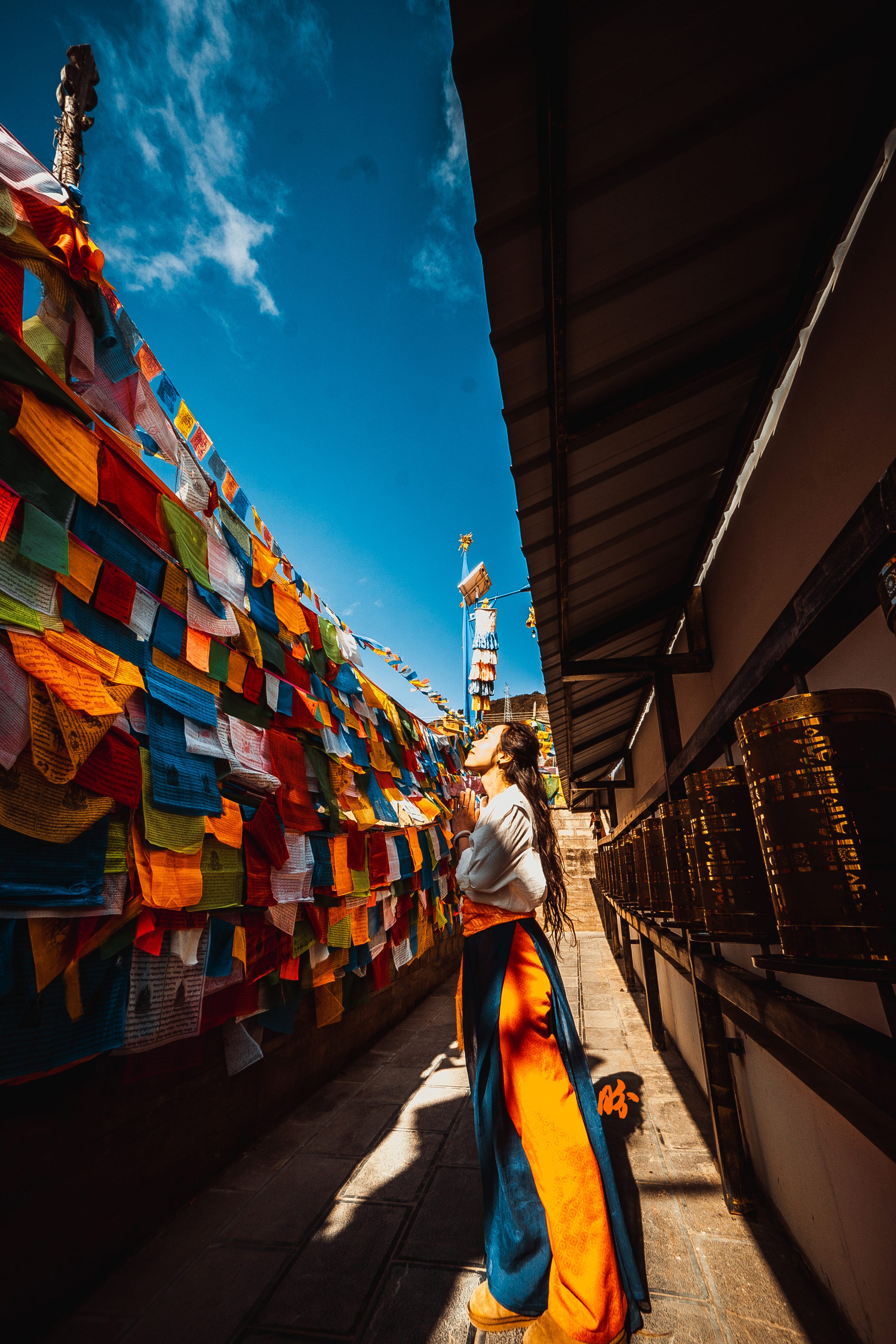
These scripture flags had scriptures written, and when the wind blows, it would fly which is like having the blessings being transmitted across the land as well. 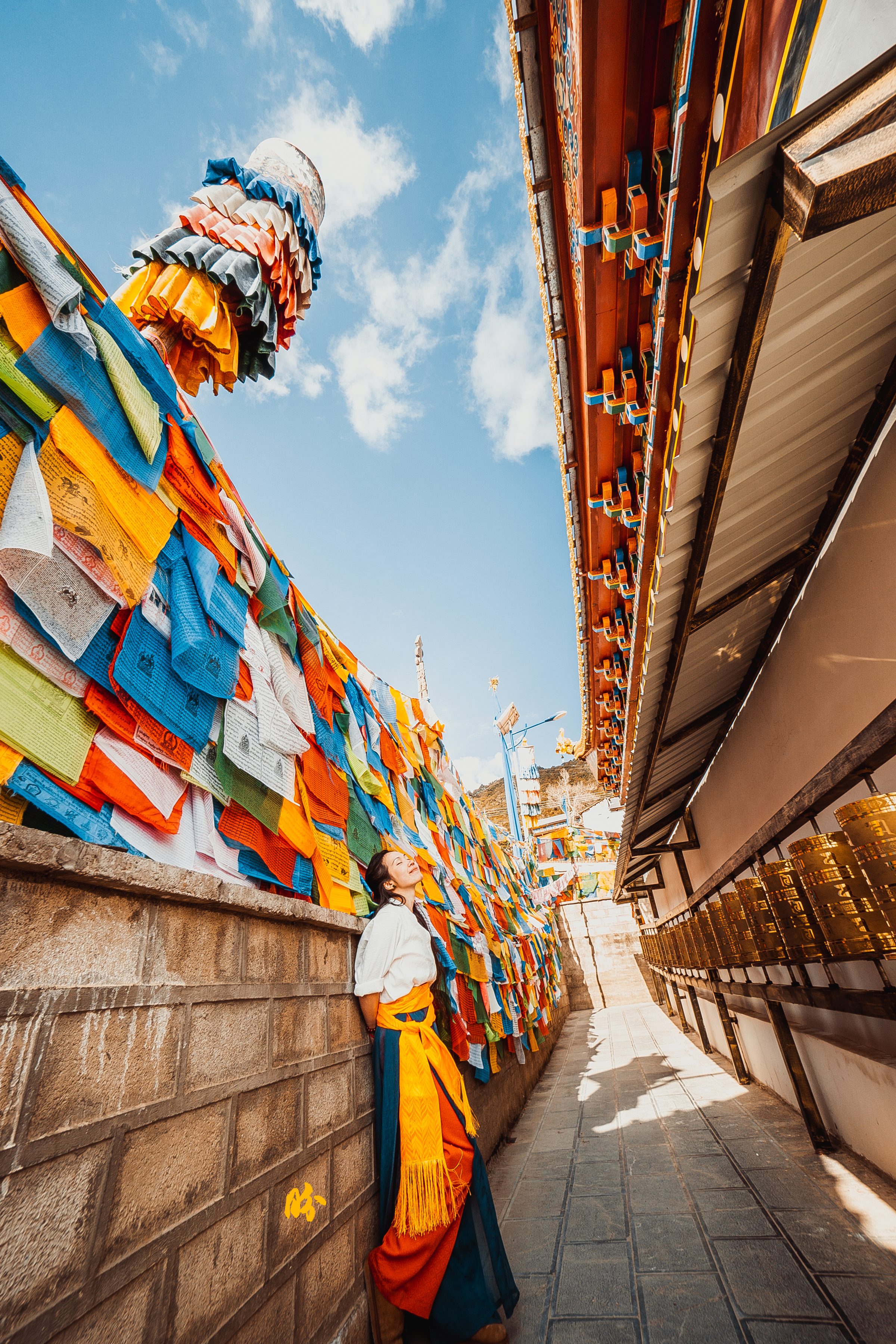
If you notice, I’ve added a belt that’s close to the scripture flags. This is a Tibetan-style cloth belt, NOT to be confused with their Hada (a religious/cultural symbol of respect and hospitality given to guests and VIPs and to be hung around the neck or on buddha/temples). But I thought it would be nice to infuse some local element in my Hanfu so there’s some cultural assimilation and interaction. - The lost world of Balog Son (Balagezong) : The admission ticket to this place is 210 RMB/pax (about 45SGD/pax). Yes, you read that correctly. And it does NOT include the boat ride (which one might need if one doesn’t want to walk some 3km from the end point back via the same route). The walk is really just ok, nice, but not spectacular. The ride to the top of the hill, however, was rather worth it (included in ticket).Initially we still didn’t feel that it’s well worth the 210 RMB cost, but we later learnt that this place was the love child of a former resident of the Bala village who lived on top of the hill. Because of how isolated this place is from the rest of the world, even back in the 70s, it took villagers about 2-3 days to walk out of this place to the nearest civilisation. They could only have about 4-5 months to trade and get all the supplies they need for the entire year because the rest of the year the entire area would be covered with snow and it was possible to get out. For them to trade, they would need to climb over the snowcapped mountain to get to Sichuan, and that would take them about 15 days. Villagers also didn’t have a proper road to travel out of this mountainous area, they only had a small tiny road carved out and children would be tied by a rope when they made the trip with their parents to prevent them from falling to their deaths. There used to be 60+ families living there, now there’s only about 20+ left.It was against this background that the man who built this place up as a tourist site decided to do something about it. The founder grew up in the village and injured his one eye as a child, and because of the long time he took to get out of the village, he missed the best time for treatment and was blind in one eye. Because of the great poverty the village was in (they didn’t have much proper soil and land to grow much props), they also didnt have proper shoes. In fact, he didn’t wore any shoes before the age of 10. When he saw the world out there, and how shoes were so readily available, and he thought of the kids back home. So he made up his mind that he needed to build a road out of his village, and help those back home. He worked for years in the world out there, and accumulated a fortune (multi-millionaire). Then he came back and started building roads for the villagers. Not only did he wipe out his savings, he incurred huge debt before the project was completed. Fortunately the government picked up part of the bills and finally, the villagers had electricity in 2007! Yes, it’s THAT recent.But it’s not over! When the place was still in its trial phase as a tourist destination in 2013, there were two huge earthquakes that damaged the roads. So repair work and rebuilding works had to take place. That’s why when we visited, the guide said that we are only going as far as the construction of the roads go, because it’s still very much a Work in Progress.And that’s exactly why it’s such a nice place to visit! It’s still very much under explored by people cosit’s off the usual tourist route, and it’s not commercialised (no shops, mass produced stuff along the way, fake jade or whatever that people try to con you into buying). It’s just you and nature.
I wouldn’t mind visiting it at again, and spend more time exploring the area, get to know the village chief…
We didn’t have much time to walk around ourselves but if you need more pictures, you can view them in this link.
Here are a few of my own. But the place is much much grander and breathtaking than what pictures can capture.
Oh yes, if you are adventurous enough, they’re in the midst of building a glass passage along one of the mountain tops. Think it should be done in a year’s time. Give it a shot!
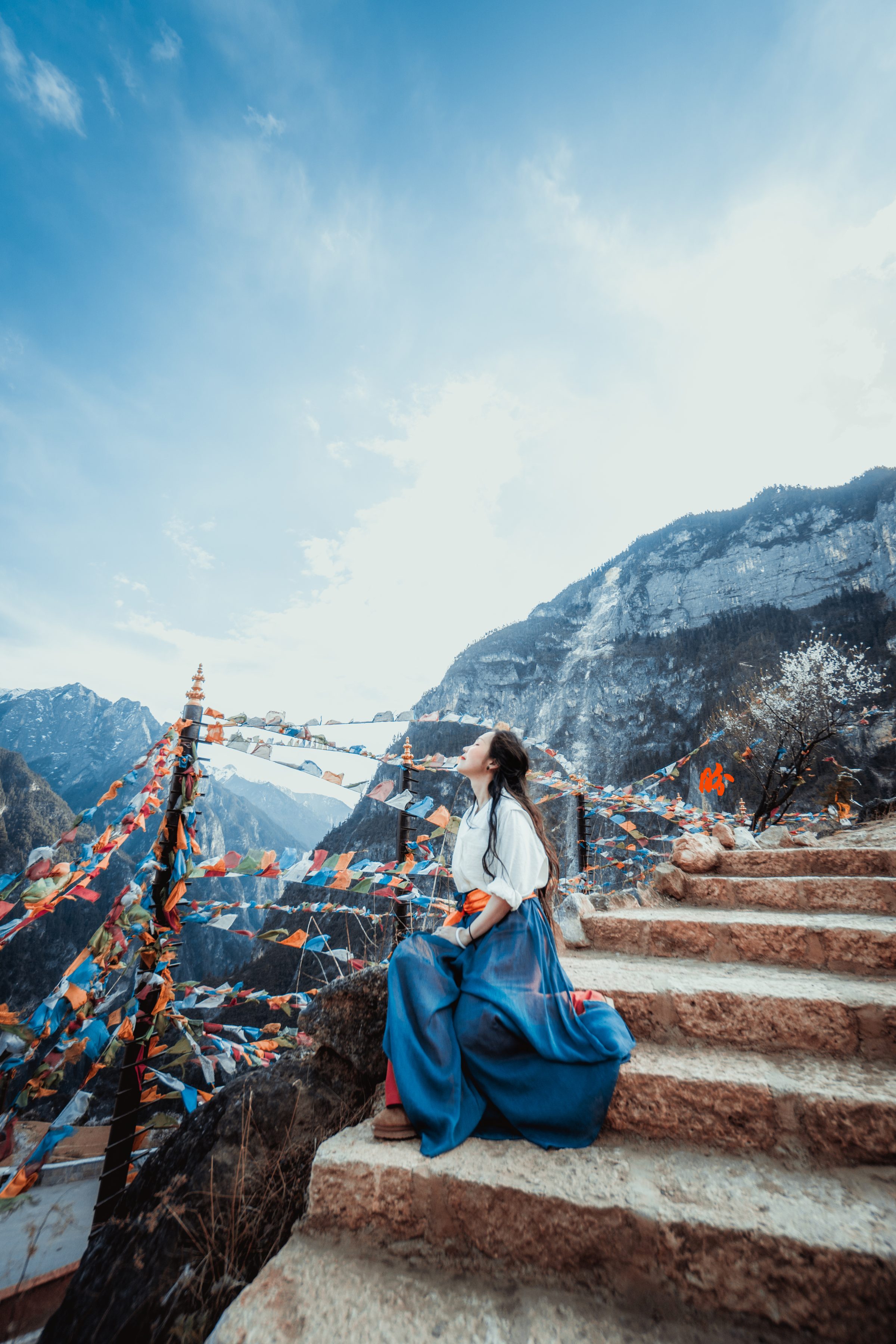
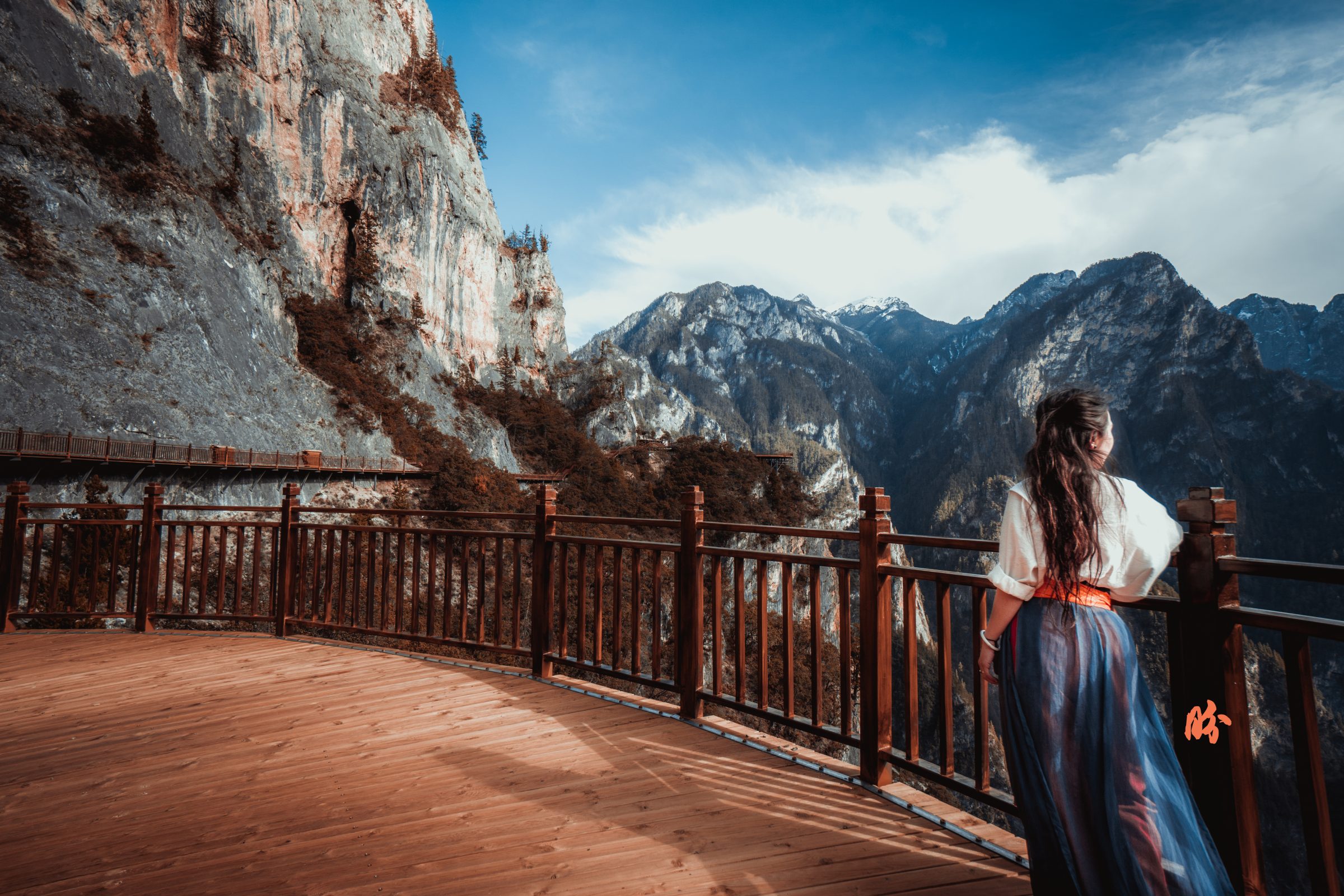
Notice the passage on the left along the mountain? Slightly beyond that would be where they’re building the glass passageway. Go for it! 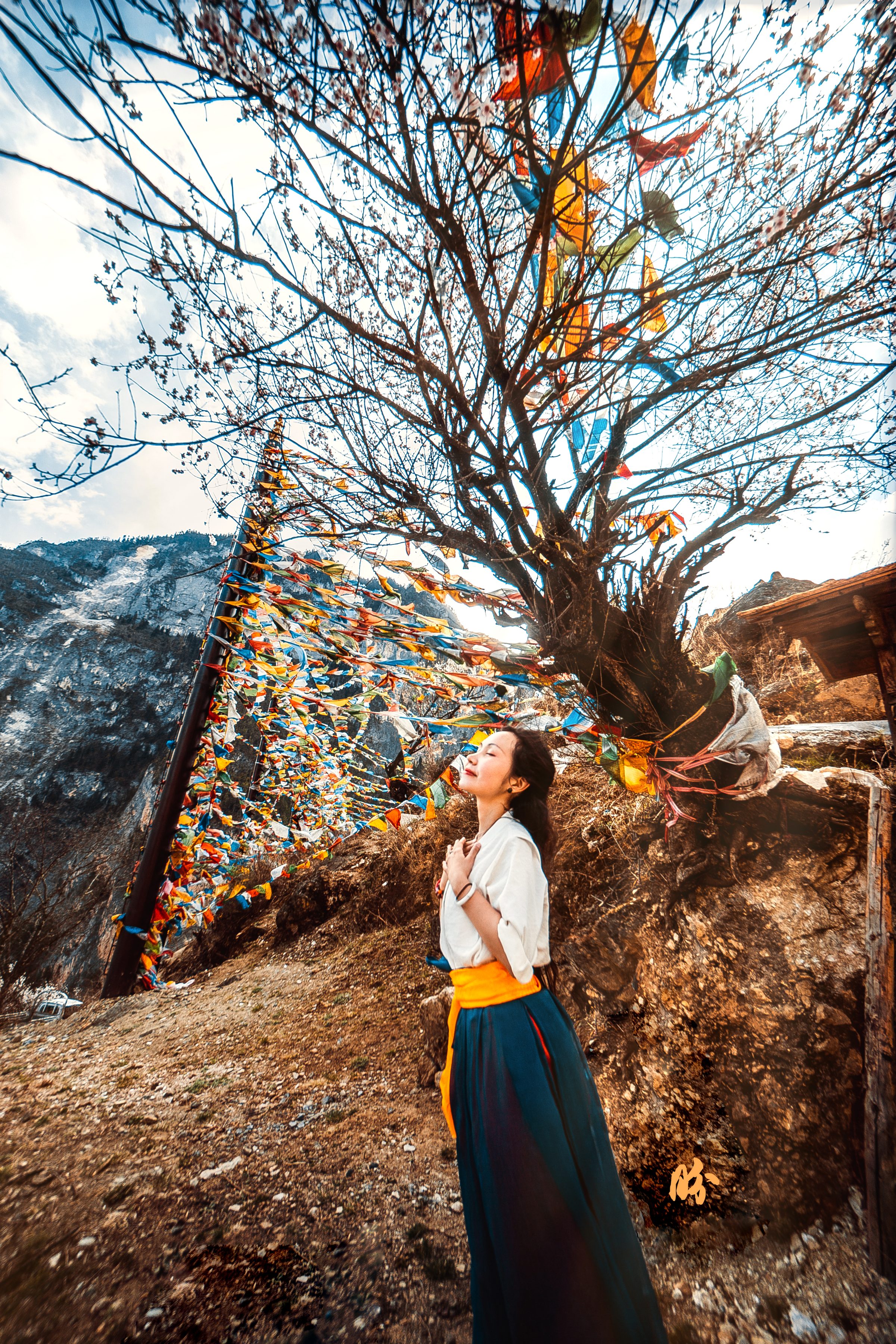
The answer’s blowing in the wind. 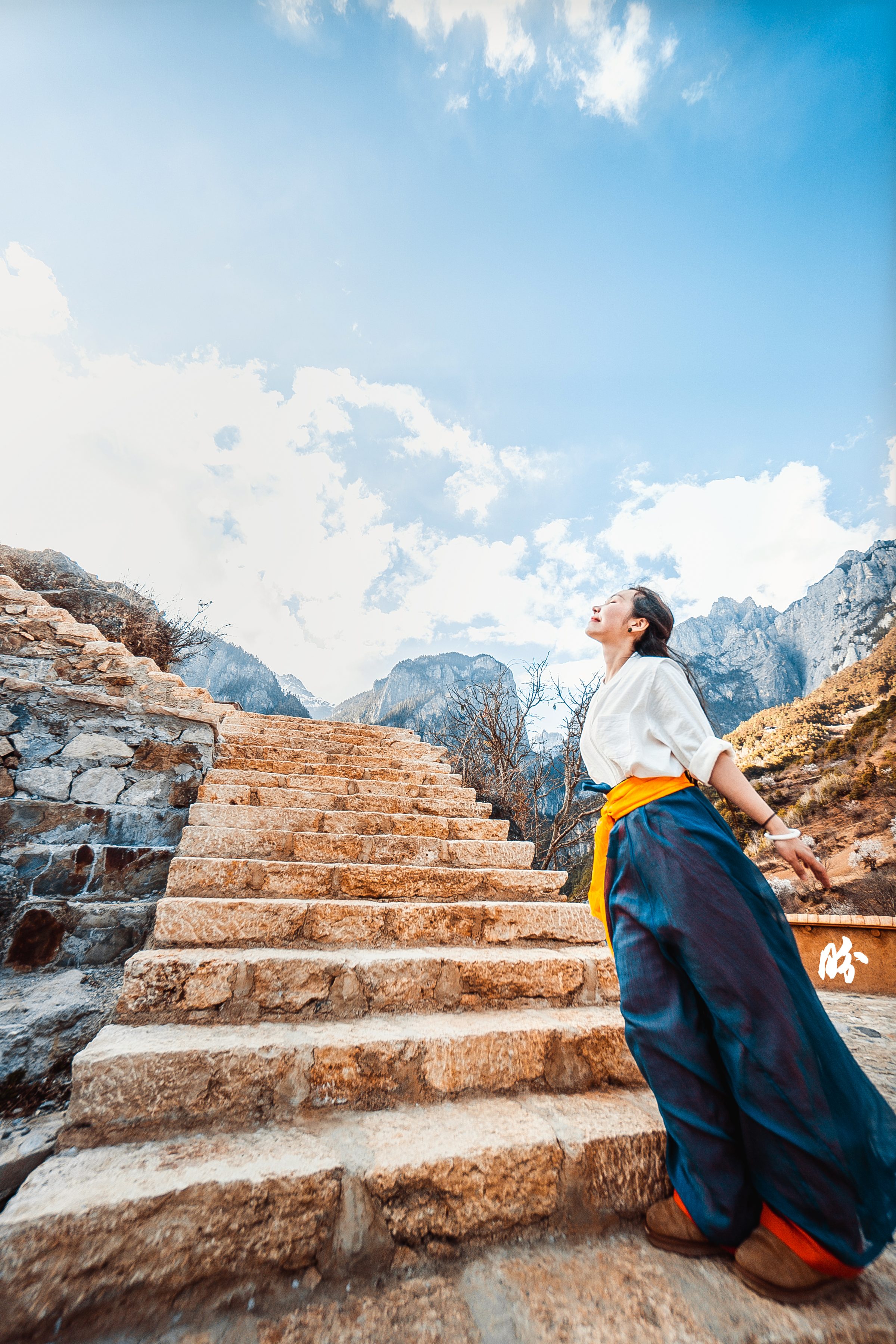
There were some white pagodas with buddhist sculptures and offerings at the top of this platform. But out of respect for the religion, I did not take them.
Day 4
- Shika Snow Mountain (We skipped, and rested until lunch, but this is a place that’s worth visiting cos you can get on top of the snow mountain!) Apparently on a good day, you could see all the holy mountains (I think there were 8) in Tibetan culture atop Shika Snow Mountain.
- A drive around the Napa Lake
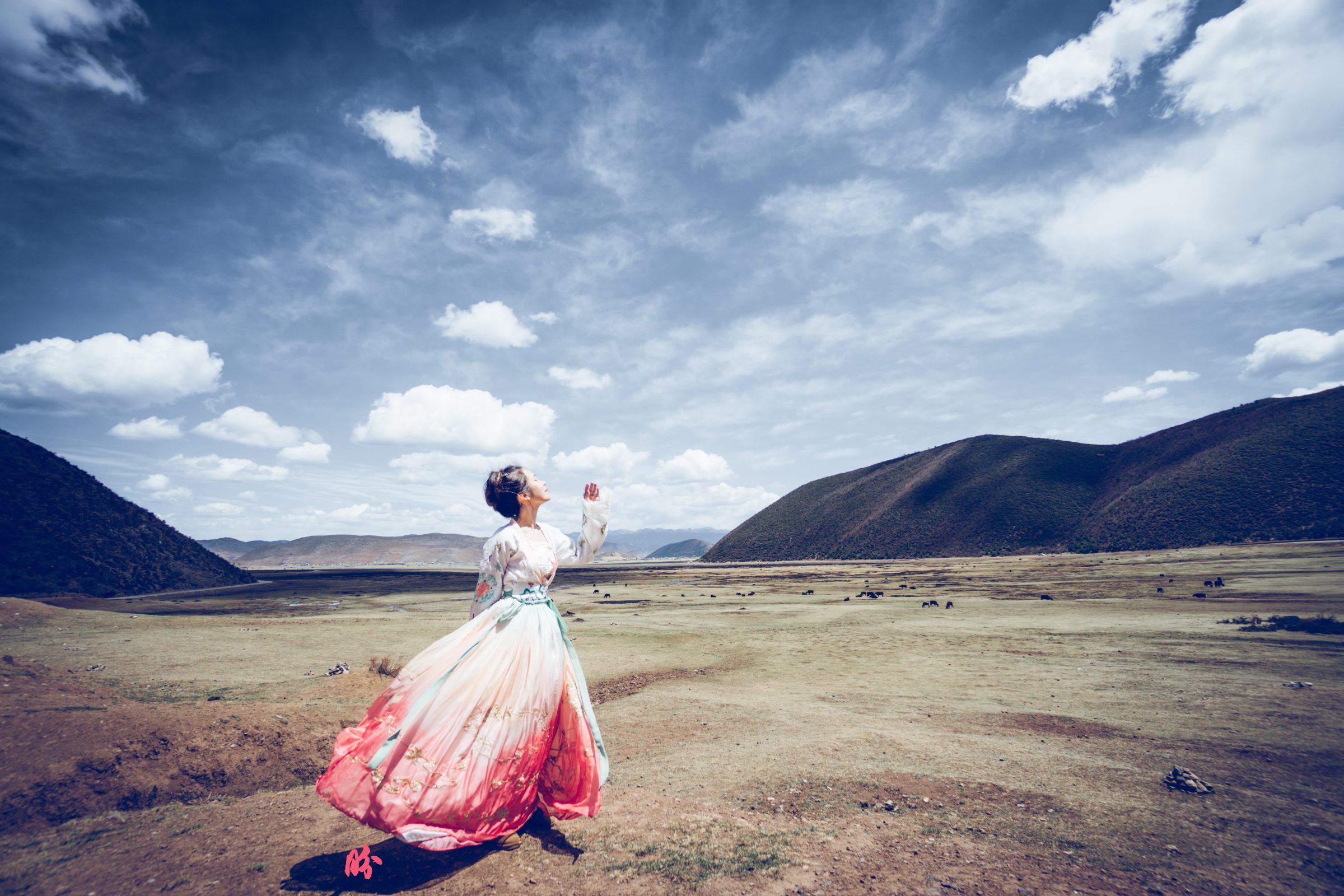
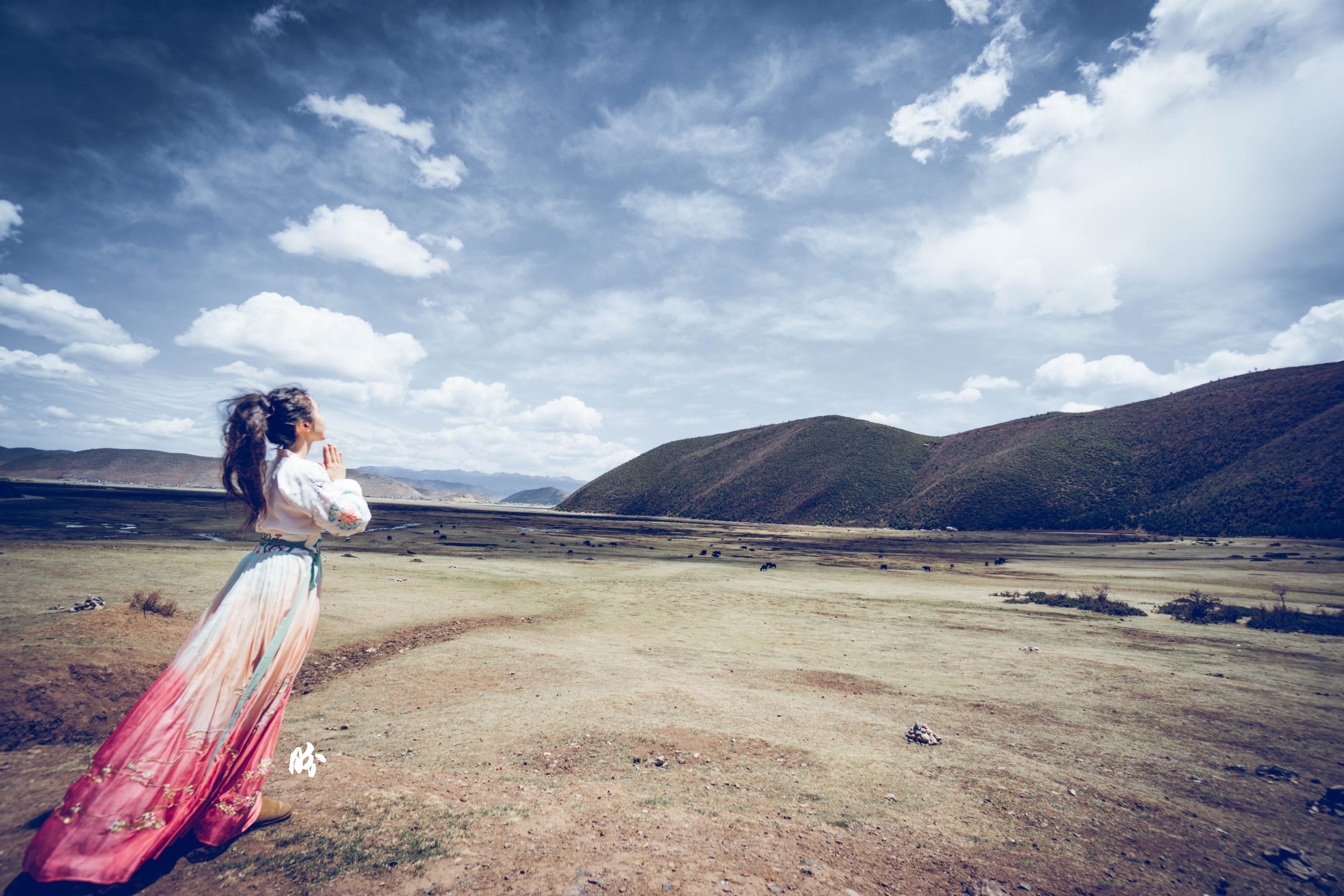
Tibetans live off the land, and it’s for that reason they have a lot of gratitude towards nature. They rarely take fish, because of they are hesitant about taking lives, and to feed the entire family, it would mean taking a lot of lives of fishes. But their harsh environment and strenuous lifestyle require them to take in more protein, so they rather kill off larger animals which could feed more people when a life is taken. 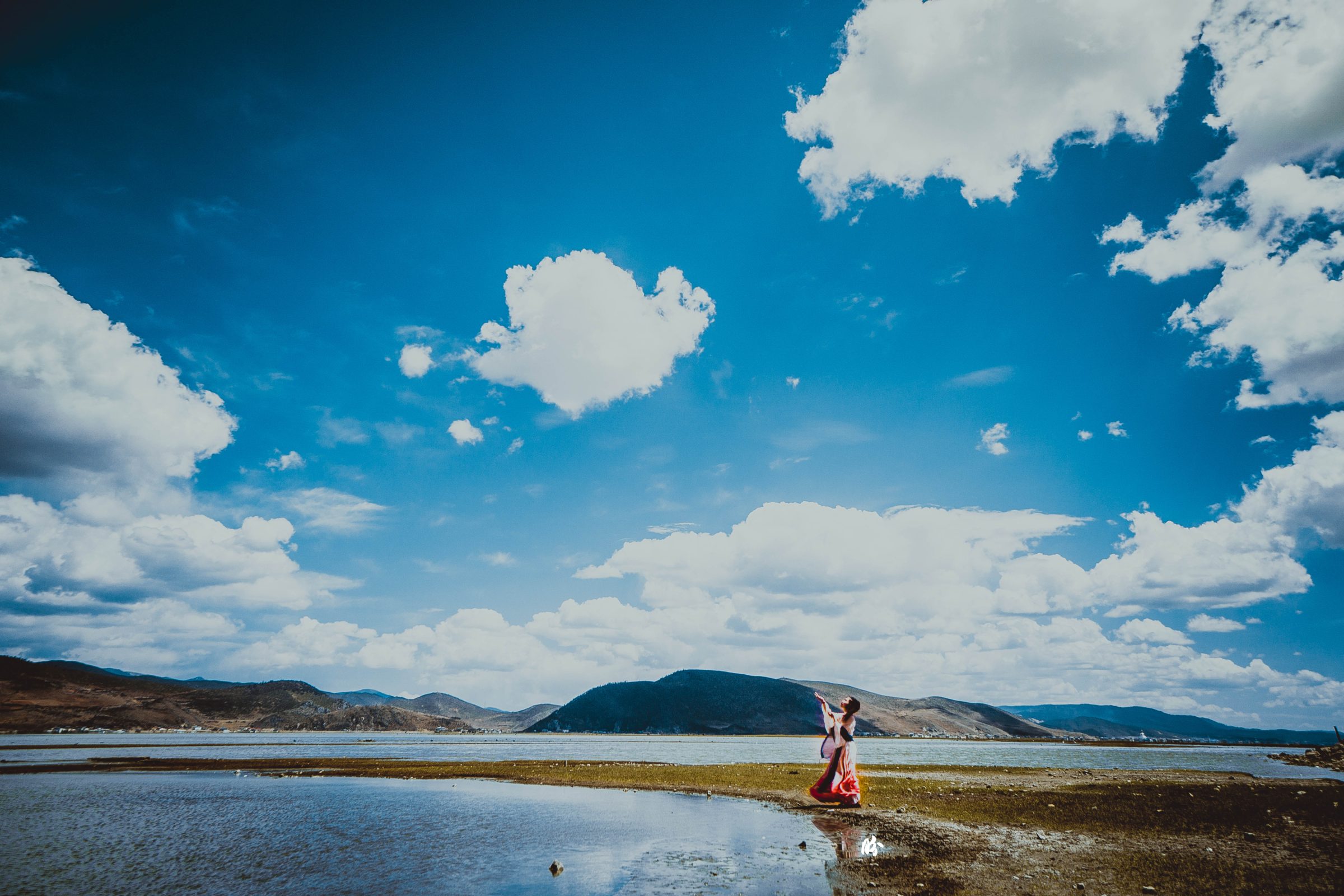
Different groups of Tibetans have different funeral practices. Some have sky funeral (feed them to the birds), some have water funeral (feed them to the fishes). And depending on the funeral practice, some would not take fish, and some would not take birds for food because they believe that these are creatures that connect life on earth with the spiritual world. Also, along the idea of not eating your own people. I’m now in Xi’an, and will be travelling to more Tibetan areas and other extremely culturally interesting places. So stay tuned~
5 responses to “#Hanfugirltravels: Shangri-la [Since 2001] (previously known as Zhong Dian)”

Lovely post as usual. Your hanfu skirt feels very Tibetan in itself: is that part of a Tang-style dress? Reading this makes me feel like going there myself. Can’t wait for your instahusband post!

Aww… Actually the waist level skirt is just like any other skirts except that it is the string! The one at the scripture flags is a pair of song style pants! I haven’t worn any Tang style yet cos, hmm.. I look kinda pregnant in them.

Didn’t notice that it’s a pair of pants not a skirt! Haha yeah I thought you turned a Tang high waisted skirt into a low waisted one. I also thought Tang style because the colour combo reminded me of Tang dresses.

I also love how you can pull off a ponytail and make it look great with your hanfu! It certainly looks more comfy and traveller-friendly than updos.

High pony tail always works! 🙂

Leave a Reply